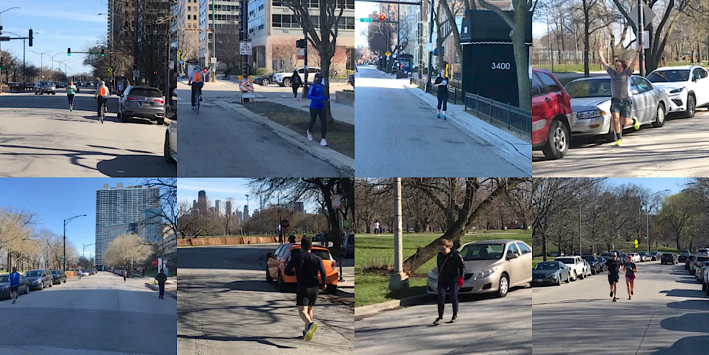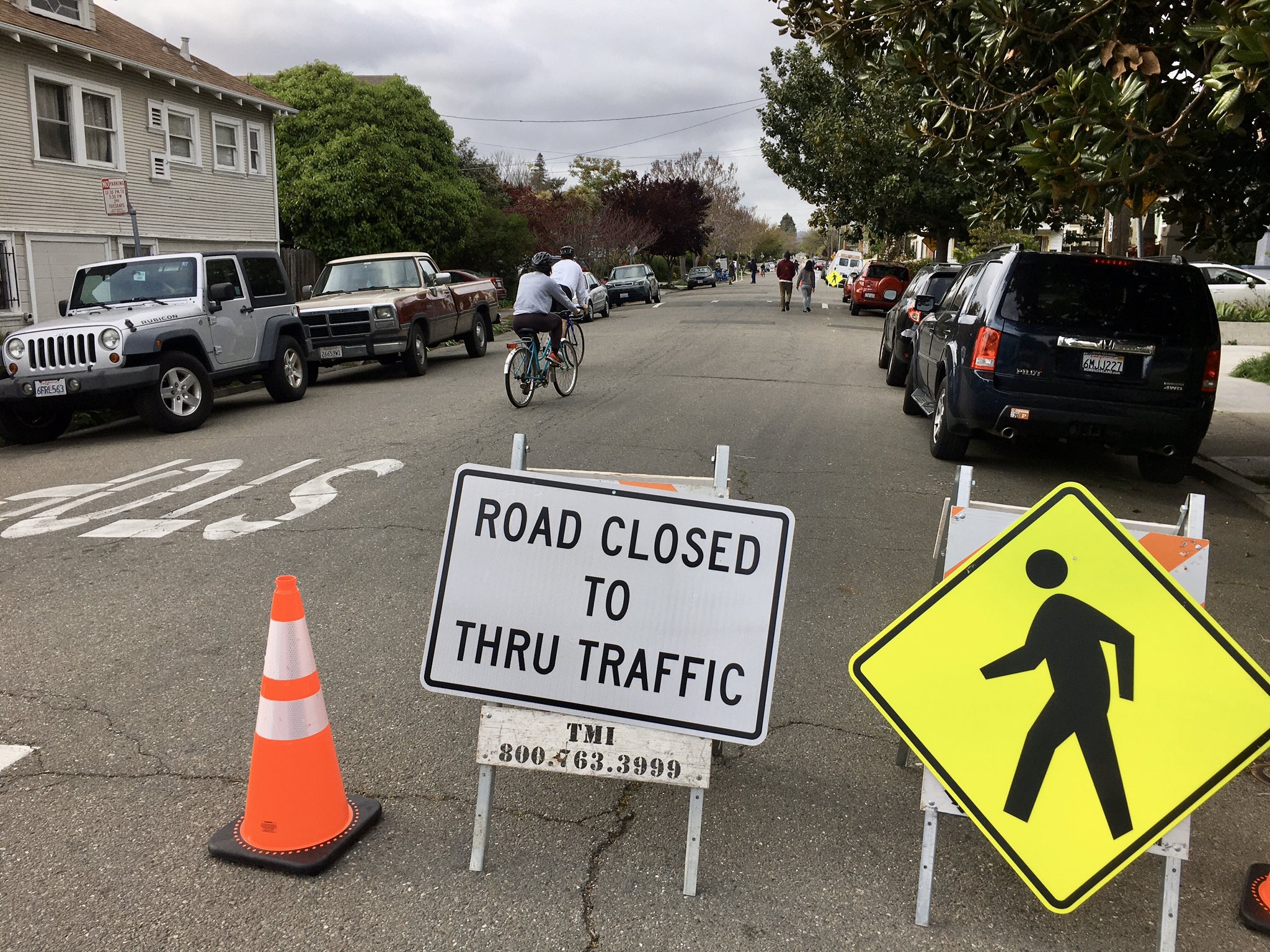The open streets and Slow Streets movement to provide space for safe, socially-distanced sustainable walking and biking, along with general calls to make it safer and easier for people to get fresh air and exercise during the COVID-19 crisis, are catching on like wildfire across the country and around the globe. So much is happening that it's hard to keep up with it all, so I'm going to throw a bunch of links at you that you can check out at your leisure.
But first, to get up to speed on what's been going on in Chicago, including Mayor Lori Lightfoot's closures of key bike commuting routes and parks, as well as the Active Transportation Alliance's decision to essentially oppose open streets, read the new Chicago Reader article on the subject by Streetsblog's Courtney Cobbs and myself. One of Active Trans' chief stated reasons for not supporting open streets is "In conversations with community partners serving Latinx, Black, and Asian communities, nobody pointed to open streets as an immediate need." The advocacy group declined to tell us which community partners they were talking about.
So we asked dozens of community organizations, aldermen, and transportation advocates in communities of color whether they thought piloting an Oakland-style Slow Streets program, banning through traffic on a network of side streets, could be beneficial in Chicago during the pandemic. We found that there's quite a bit of support for the idea, including from heavy-hitters like Democratic Socialist alderman Carlos-Ramirez Rosa, and local planning and advocacy legend Jacky Grimshaw.
Here are some more recent developments in open streets, emergency bike lane, and outdoors advocacy news:
So the city's transportation experts are acknowledging that people are driving more dangerously than ever during the pandemic. But they're not actually doing anything to make pedestrian activity and biking safer. This is during a time when these modes are surging because people are avoiding transit due to the possibility of viral exposure, and because walking, running, and biking are some of the few options left for getting fresh air and exercise.
But due to the near-impossibility of staying six feet away from strangers on narrow sidewalks, pedestrians are being forced into the street. Here's what Inner Lake Shore Drive looked like Sunday -- lots of people walking and jogging in the street. Since this is a busy bus corridor, that's not a great idea.

To be clear, Streetsblog Chicago isn't advocating for pedestrianizing Inner LSD, since it's an important bus corridor. But banning through traffic on a network of side streets would give people safer alternatives for making essential trips by foot and bike, as well as places to get physical activity. Hopefully it won't take a driver striking someone walking or running in the road to motivate Chicago officials to catch up with peer cities on this issue.
Here are some tips on preventing the spread of COVID-19, and advice for Chicagoans on what to do if you think you may have been exposed to the virus.




